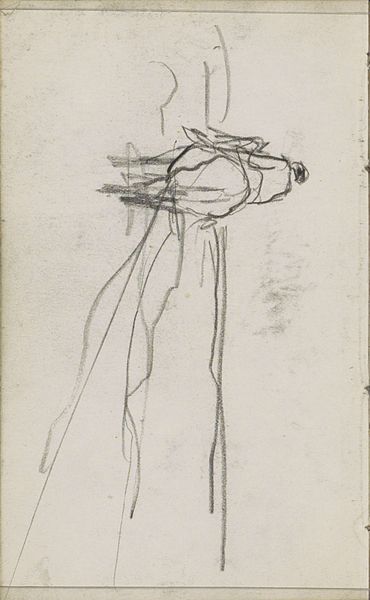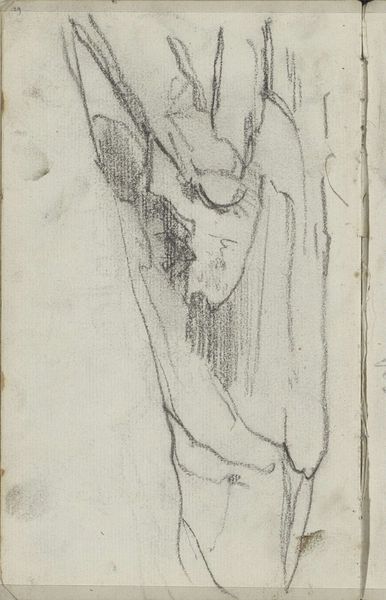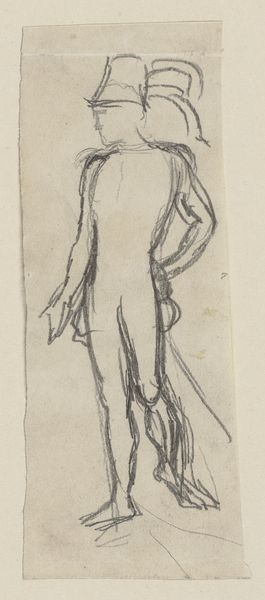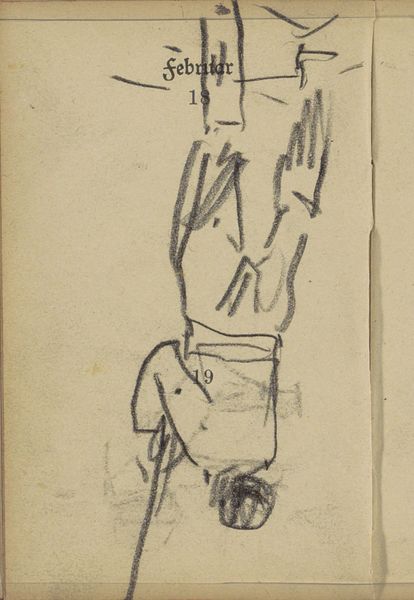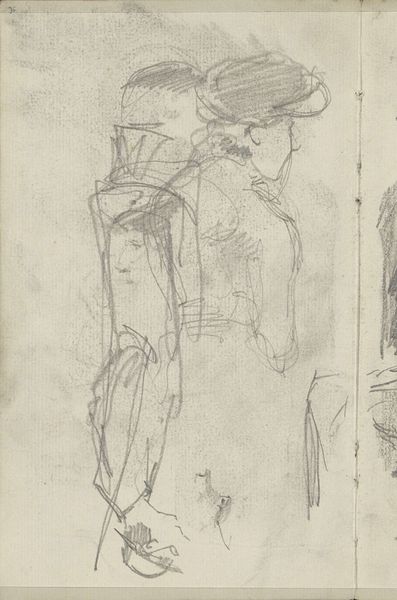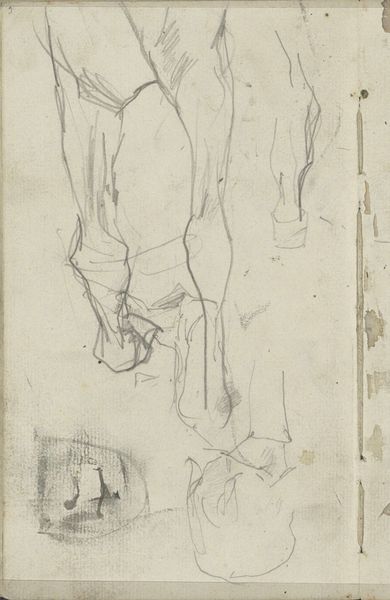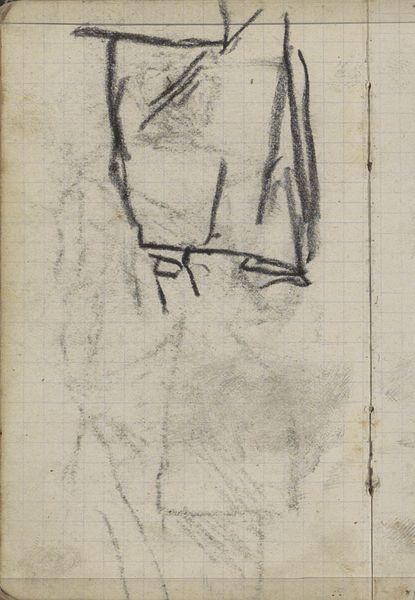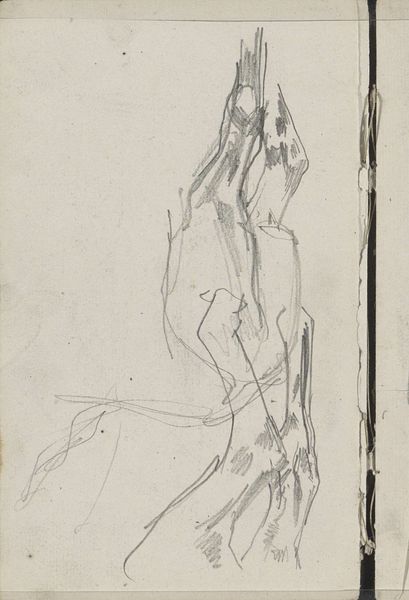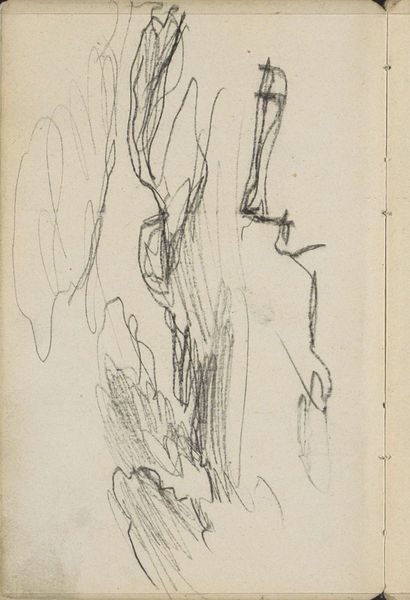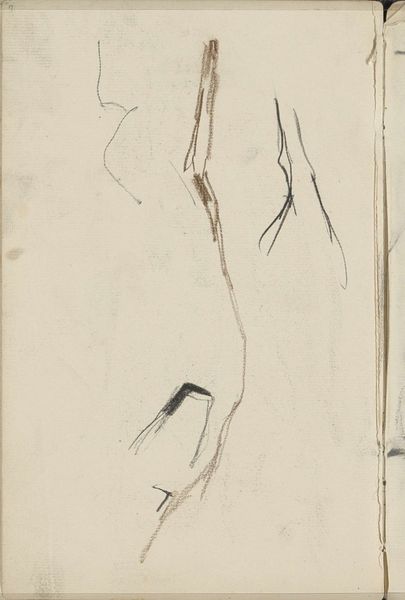
Copyright: Rijks Museum: Open Domain
Curator: This sketch is titled "Paard, van achteren gezien," or "Horse, seen from behind," by George Hendrik Breitner. Breitner captured this image with graphite and pencil sometime between 1886 and 1903. It's part of the Rijksmuseum's collection. Editor: Oh, I get such a feeling of transience from it. The lines are so raw, so immediate. It feels like a fleeting impression, like Breitner just captured the essence of the horse in a few strokes. It’s more about the feeling of a horse than the exact anatomy. Curator: Absolutely, and that's so typical of Breitner, don't you think? He was very interested in capturing movement and the atmosphere of daily life. In this sketch, you can really see him focusing on the form and the weight of the animal, those powerful haunches especially. Editor: The perspective is odd, though. Why show the horse from the back? It’s vulnerable, right? I always think about how horses, as prey animals, are wired to detect danger approaching from behind. So, to present the horse this way feels psychologically charged, like it is in waiting, or like the present state of affairs is about to change. Curator: That's a compelling interpretation. And if we delve into symbolism, the horse can be seen as representing vitality and strength, but also the burden of labor. Maybe that rear view makes us consider that these strong creatures are often driven forward by unseen forces, always on the move. Editor: It does make you think. I'm really struck by the economy of line too. Breitner has used so few marks to suggest muscle and mass. Each stroke seems so deliberate. Curator: Yes, there’s a real elegance to his approach here. It reminds us that drawing isn’t always about perfection but can be a direct route to capturing feeling. A simple image can speak volumes, a study such as this could suggest broader truths. Editor: Ultimately, I'm left with the sensation of the artist having briefly communed with something wild and vital, only to then allow it to pass on and away into the realm of memory. Curator: Indeed. This drawing isn't just a representation of a horse. It's an echo of a moment, resonating long after it was first observed, offering insight into both subject and artist.
Comments
No comments
Be the first to comment and join the conversation on the ultimate creative platform.

